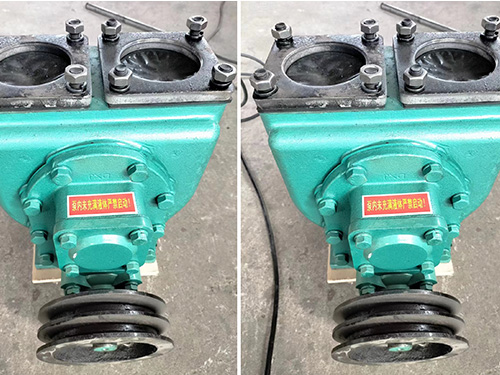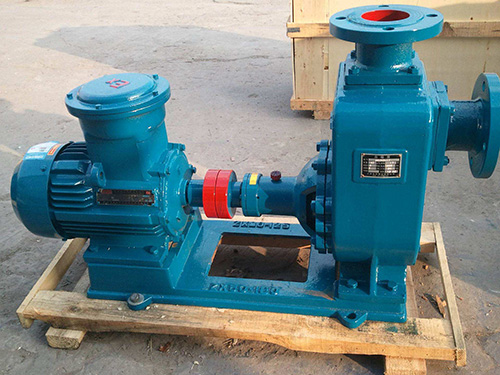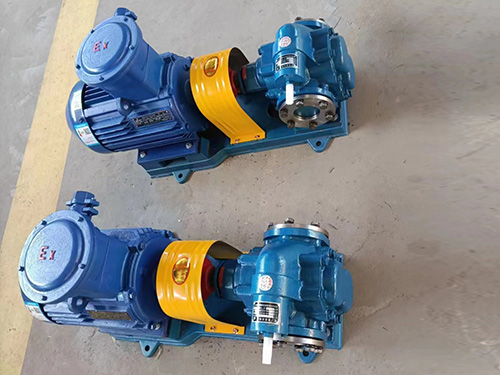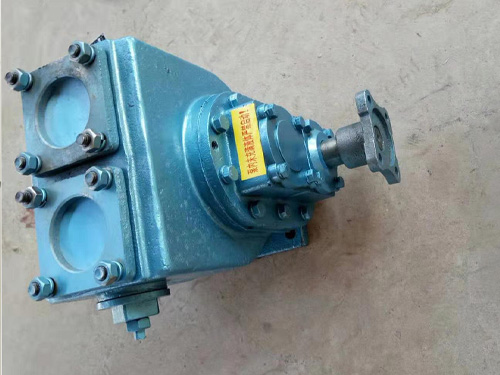The inspection, repair, and working principle of the packing seal of the self suction centrifugal pump are the same
2023-08-27 19:01:22
【1】 Inspection and repair of packing seal for self suction centrifugal oil pump The main components of packing seal include packing box casing, packing, liquid seal ring, packing gland, bottom liner, etc. When inspecting and measuring the packing seal, attention should be paid to the following aspects:
The radial clearance between the pump casing and the shaft sleeve. First, use a vernier caliper to measure the inner diameter of the center hole, then measure the outer diameter of the shaft sleeve, and then calculate it. The smaller the value of radial clearance a, the better, but there should be no friction phenomenon. When the radial clearance is too large, there is a phenomenon of "packing". The radial clearance between the pump casing and the shaft sleeve is 0.3-0.5mm
The radial clearance between the outer circle of the packing gland and the inner circle of the packing box. The packing box of a self suction centrifugal pump plays a guiding role in the advancement of the packing gland. If the radial clearance is too large, the packing gland is easily flattened, which will lead to friction and wear The radial clearance between the inner circle of the packing gland and the outer circle of the shaft sleeve. The radial clearance value between the inner circle of the packing gland and the outer circle of the shaft sleeve of the self suction centrifugal oil pump is too small. This will cause friction between the inner circle of the packing gland and the outer circle of the shaft sleeve, while generating frictional heat, causing the packing to coking and fail, resulting in wear and tear between the packing gland and the shaft sleeve. In general, the radial clearance is 0.4-0.5mm[2] The working principle of a self-priming centrifugal pump is the same.
The self-priming height of a self-priming centrifugal pump is related to factors such as the sealing gap in front of the impeller, the pump's rotation speed, and the liquid level in the separation chamber.
. The smaller the sealing gap in front of the impeller, the higher the self suction height, usually taken as 0.3-0.5 millimeters; When the gap increases, except for the decrease in self suction height, the head and efficiency of the pump decrease. The self suction height of the pump increases with the increase of the circumferential velocity u2 of the impeller. However, when the self suction height reaches a larger value, the number of revolutions increases and the self suction height no longer increases, only shortening the self suction time; When the speed decreases, the self suction height decreases. Under other unchanged conditions, the self suction height also increases with the increase of water storage height (but cannot exceed the optimal water storage height of the separation chamber). In order to achieve good mixing of air and water in a self suction centrifugal pump, the number of blades on the impeller must be reduced to increase the pitch of the blade cascade; It is advisable to use a semi open impeller (or an impeller with a wider impeller groove), which facilitates the deep injection of return water into the impeller cascade. Most self priming centrifugal pumps are paired with internal combustion engines and installed on movable small cars, making them suitable for outdoor operations A self priming centrifugal pump is a type of pump that can automatically pump water up without filling the suction pipeline with water. There are many types of self priming centrifugal pumps, among which the working principle of an external mixing self priming centrifugal pump is to fill the pump casing with water before starting the pump (or the pump casing itself has water). After starting, the impeller rotates at high speed, causing the water flow in the impeller groove to flow towards the vortex shell. At this time, a vacuum is formed at the inlet, causing the inlet check valve to open. The air in the suction pipe enters the pump and reaches the outer edge through the impeller groove. On the other hand, the water discharged into the gas-water separation chamber by the impeller flows back to the outer edge of the impeller through the left and right return holes. The water flowing back from the left return hole is shot into the impeller groove under the action of pressure difference and gravity, and is crushed by the impeller. After mixing with the air from the suction pipeline, it is thrown towards the volute and flows in the direction of rotation. Then it converges with the water flowing from the right return hole and flows along the snail shell. Due to the continuous impact of liquid on the blade cascade inside the volute, it is constantly crushed by the impeller, and then strongly stirred and mixed with air to generate a gas-water mixture, which continuously flows and prevents the separation of gas and water. The mixture is tongue separated at the outlet of the snail shell and enters the separation chamber along a short tube. The air inside the separation chamber is separated and discharged through the outlet pipe, while the water still flows towards the outer edge of the impeller through the left and right return holes and mixes with the air in the suction pipe. This repeated cycle gradually exhausts the air in the suction pipeline, allowing water to enter the pump and complete the self suction process The working principle of an internally mixed self-priming centrifugal pump is the same as that of an externally mixed self-priming centrifugal pump, except that the return water does not flow to the outer edge of the impeller, but to the inlet of the impeller. When starting an internal mixing self-priming centrifugal pump, the reflux valve below the front of the impeller must be opened to allow the liquid inside the pump to flow back to the inlet of the impeller. Under the high-speed rotation of the impeller, water mixes with the air from the suction pipe, forming a gas-water mixture that is discharged into the separation chamber. Here, air is discharged while water returns from the reflux valve to the inlet of the impeller. Repeat this process until the air is exhausted and water is sucked in
The YHCB high flow pump has the characteristics of large flow rate, high head, small settli...

The CYZ centrifugal pump adopts an axial return liquid pump body structure, which is compos...

Copper gear pump (KCB type) is suitable for conveying lubricating oil or other liquids with...

The car mounted circular arc gear pump can be installed on the car and driven by the output...



